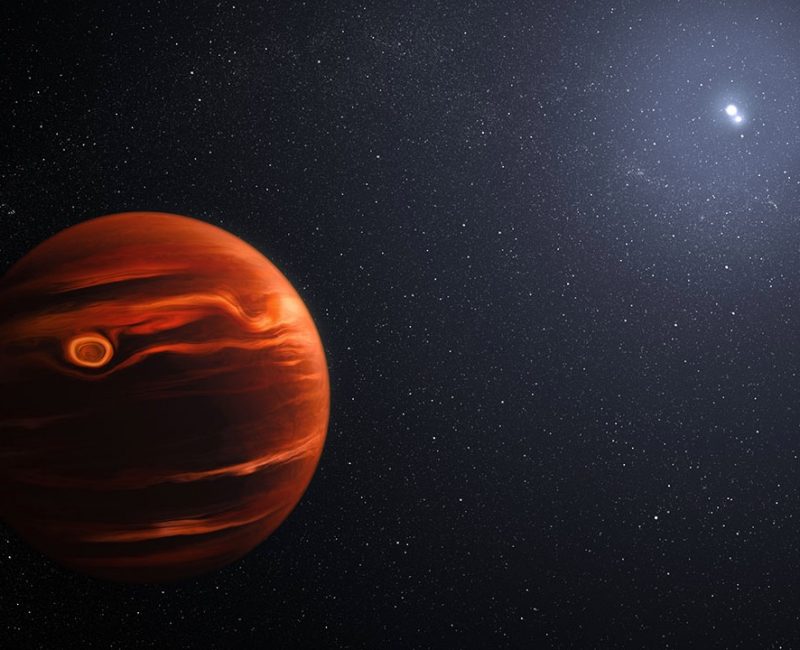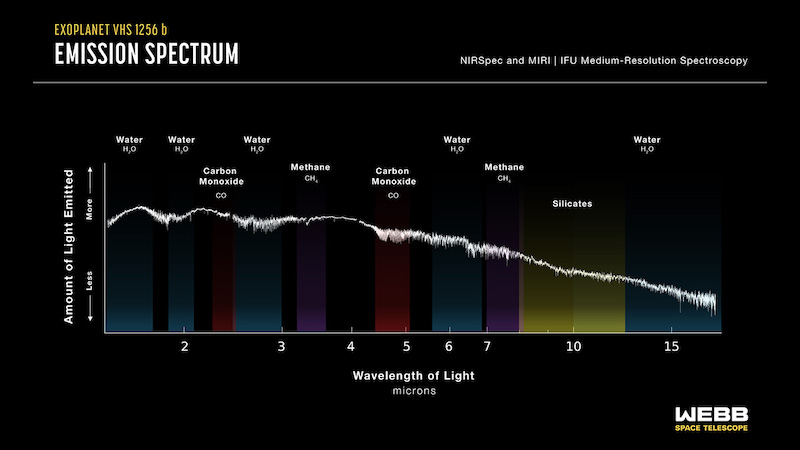
Earthly sandstorms can be powerful and dangerous, but they pale in comparison to those of distant exoplanet VHS 1256 b. This planet orbits two suns, located some 40 light-years from Earth. NASA’s Webb space telescope spotted the evidence for its swirling clouds, which are composed of silicate particles that range in size from tiny smoke-like specks to sand-like grains.

The sand grains sometimes combine (as water droplets in clouds do on Earth), get heavy, and then fall like rain. The scientists said:
The atmosphere is constantly rising, mixing, and moving during its 22-hour day, bringing hotter material up and pushing colder material down.
The resulting brightness changes are so dramatic that it is the most variable planetary-mass object known to date.

An international team of researchers announced the findings on March 22, 2023. The group published the peer-reviewed details of the discovery in The Astrophysical Journal Letters on March 20.
Last chance to get a moon phase calendar! Only a few left. On sale now.
Meet a giant exoplanet

The planet – VHS 1256 b (or VHS 1256-1257 b) – is huge, with a mass 19 times (+/- five times) the mass of our solar system’s largest planet, Jupiter.
Unlike most exoplanets found so far, it orbits far from its stars, about four times the distance of Pluto from our sun. On average, Pluto is 3.7 billion miles (5.9 billion km) from our sun.
Pluto takes 248 earthly years to complete a single orbit. But VHS 1256 b is so far away from its stars that it takes 10,000 years to complete one orbit. Lead author Brittany Miles of The University of Arizona said:
VHS 1256 b is about four times farther from its stars than Pluto is from our sun, which makes it a great target for Webb. That means the planet’s light is not mixed with light from its stars.
Cloudy, with a chance of silicate rain
The Hubble Space Telescope has studied VHS 1256 b before. But these scientists say the new observations from Webb are the most detailed yet.
Webb analyzed the planet’s atmosphere with its Near Infrared Spectrograph (NIRSpec) and Mid-Infrared Instrument (MIRI) instruments.

The planet is almost completely covered by clouds, and the atmosphere consists of a complex assortment of various molecules. This includes carbon dioxide, water, methane and carbon monoxide. These are, in fact, the largest number of molecules ever detected at the same time in the atmosphere of an exoplanet. Andrew Skemer of the University of California, Santa Cruz, said:
No other telescope has identified so many features at once for a single target. We’re seeing a lot of molecules in a single spectrum from Webb that detail the planet’s dynamic cloud and weather systems.
Co-author Beth Biller of the University of Edinburgh in Scotland said:
The finer silicate grains in its atmosphere may be more like tiny particles in smoke. The larger grains might be more like very hot, very small sand particles.

A treasure chest of data from Webb
These first findings are exciting, but there is more to come. The researchers say that they are like the first “coins” pulled out of a treasure chest of data. As Miles noted:
We’ve identified silicates. But better understanding which grain sizes and shapes match specific types of clouds is going to take a lot of additional work. This is not the final word on this planet. It’s the beginning of a large-scale modeling effort to fit Webb’s complex data.
Biller added:
There’s a huge return on a very modest amount of telescope time. With only a few hours of observations, we have what feels like unending potential for additional discoveries.
Bottom line: NASA’s Webb space telescope has detected swirling, gritty clouds of silicates and numerous molecules in the atmosphere of a giant exoplanet 40 light-years away.